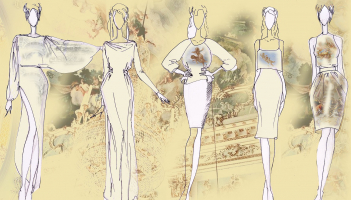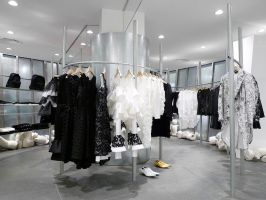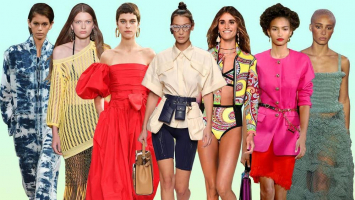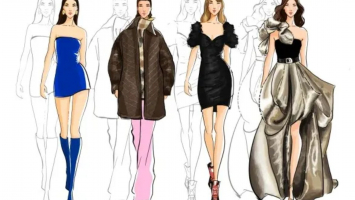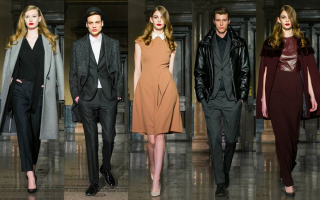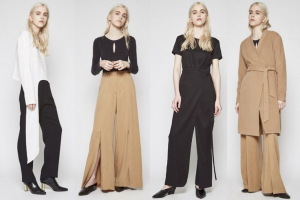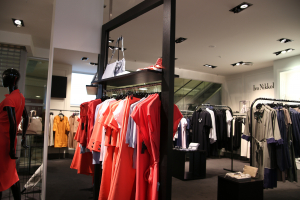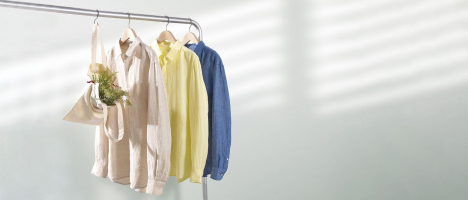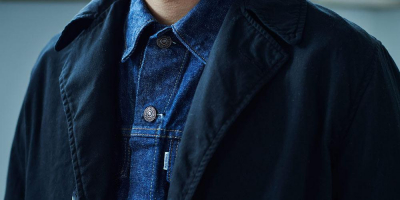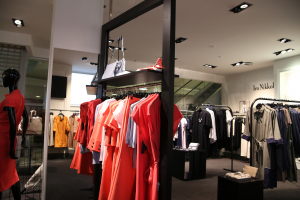Top 10 Most Famous Japanese Fashion Designers
Japan has produced many influential and renowned fashion designers over the years. Let's discover the list of the most famous Japanese fashion designers.... read more...
-
Rei Kawakubo is a highly influential and enigmatic figure in the fashion industry. Born on October 11, 1942, in Japan, Kawakubo has had a significant impact on the world of fashion and is widely regarded as one of the most innovative designers of her time. In 1969, she founded Comme des Garçons, which means "like boys" in French, a name that reflects her unconventional vision of fashion.
The brand quickly gained recognition for its avant-garde designs and rebellious spirit. Kawakubo's designs rejected the prevailing trends of the time, such as feminine elegance and overt sexiness, and instead embraced a more deconstructed, androgynous, and anti-establishment aesthetic.
Throughout her career, Rei Kawakubo has continued to push boundaries and redefine fashion. She has collaborated with various artists, musicians, and designers, including the likes of Yohji Yamamoto and Junya Watanabe. Her influence extends beyond the realm of fashion, as she has also ventured into interior design, fragrance, and art installations.In 1983, Rei Kawakubo became the first Japanese designer to present her collection in Paris, a move that revolutionized the perception of Japanese fashion globally. She has received prestigious awards, including the Fashion Group International's Superstar Award and the Order of the Rising Sun, one of Japan's highest honors.
Born: 1942
Education: Keio University
Website: https://comme-des-garcons-online.com/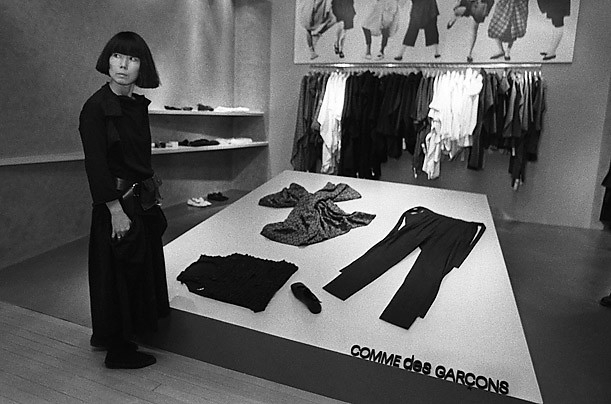
Image by miahowe via flickr.com Video by The Met via youtube.com -
Born on October 3, 1943, in Tokyo, Japan, Yohji Yamamoto has had a profound influence on the fashion industry, challenging conventional norms and redefining the boundaries of contemporary fashion. The design philosophy revolves around the concept of "rebellion" and the pursuit of individuality.
His designs often incorporate asymmetry, oversized silhouettes, and a predominantly black color palette, challenging the traditional notions of beauty and femininity. Yamamoto's career took off in the early 1980s when he presented his first collection in Paris, which received critical acclaim for its bold and unconventional designs.
He gained international recognition for his deconstructed garments, combining traditional Japanese aesthetics with Western influences. His designs are characterized by their architectural shapes, masterful draping, and meticulous attention to detail.
Throughout his career, Yamamoto has collaborated with various brands and artists, expanding his creative reach beyond fashion. He has collaborated with Adidas to create a successful line of sportswear, blending his avant-garde style with athletic functionality. His collaborations have also extended to other fields, such as costume design for ballet and opera performances.
Yamamoto's influence on the fashion industry extends beyond his own designs. His unique vision has inspired a new generation of designers, and his impact can be seen in the rise of the "Japanese avant-garde" movement. His work continues to resonate with fashion enthusiasts and is often celebrated for its artistic and intellectual depth.Born: 1943
Education: Keio University, Bunka Fashion College
Website: https://www.yohjiyamamoto.co.jp/
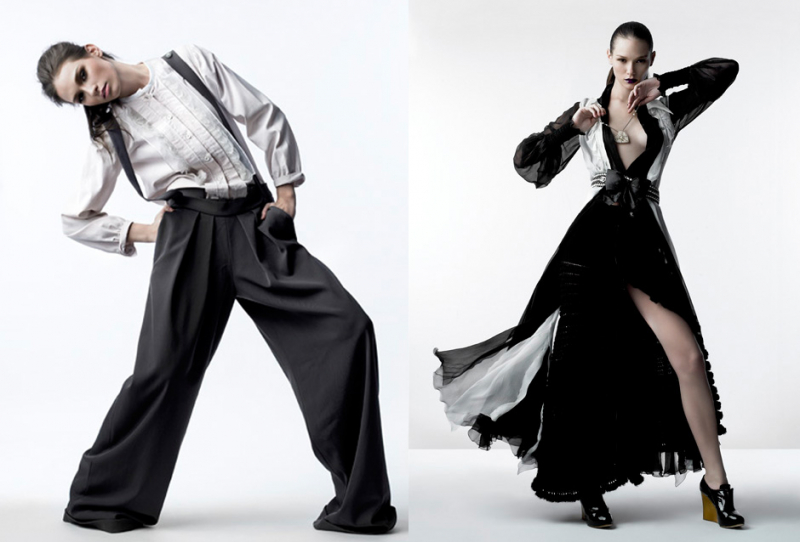
Image by Sittipun Chaiterdsiri via flickr.com Video by Yohji Yamamoto via youtube.com -
Issey Miyake is a renowned Japanese fashion designer known for his innovative designs, creative use of fabrics, and exploration of new techniques. Born on April 22, 1938, in Hiroshima, Japan, he has made a significant impact on the fashion industry and has become synonymous with cutting-edge and avant-garde design.
Miyake's design philosophy revolves around the idea of combining functionality, simplicity, and comfort with artistic expression. He believes that clothing should not only be aesthetically pleasing but also enhance the wearer's experience and freedom of movement. His designs often feature clean lines, geometric shapes, and a focus on the natural beauty of the materials he works with.
One of his notable contributions to fashion is his exploration of innovative textile technologies. He is renowned for his experimentation with fabrics, often creating new materials through processes like pleating, folding, and heat bonding. One of his most famous innovations is the pleated fabric technique, known as "Pleats Please," which revolutionized the way fabric could be manipulated and worn.
His career took off in the 1970s when he launched his eponymous fashion label, Issey Miyake. His designs gained international recognition for their unique blend of Japanese aesthetics and modern sensibilities. His collections often embrace cultural influences from around the world, bridging the gap between traditional craftsmanship and contemporary fashion.
Throughout his career, Miyake has collaborated with artists, architects, and designers from various fields, blurring the lines between fashion and other art forms. He has collaborated with renowned artists such as Dai Fujiwara and fashion innovator Rei Kawakubo. Additionally, he has collaborated with industrial designers to create functional and stylish everyday items.Born: 1938
Died: 2022
Education: Tama Art University
Website: https://www.isseymiyake.com/
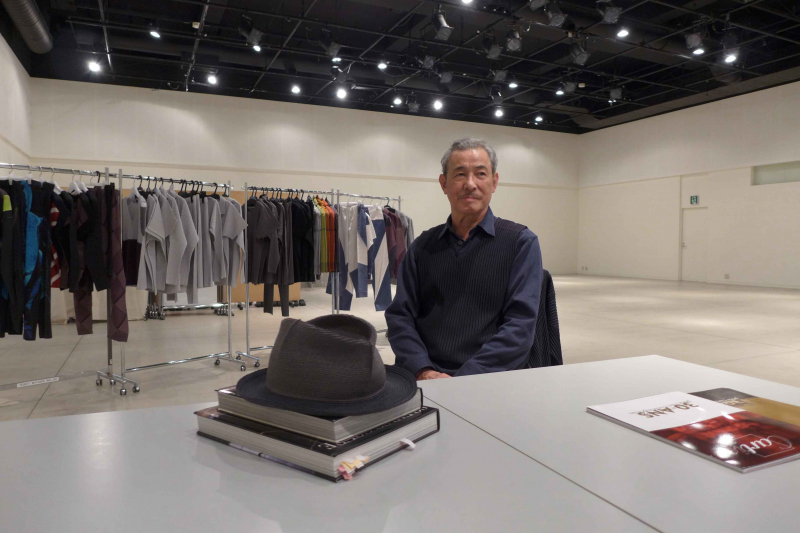
Image by fredi casco via flickr.com Video by iDest via youtube.com -
Kenzo Takada, known simply as Kenzo, was a highly influential Japanese fashion designer who made a significant impact on the fashion industry with his vibrant and eclectic designs. Born on February 27, 1939, in Himeji, Japan, Takada's unique style combined traditional Japanese aesthetics with Western influences, creating a fusion of cultures that captivated the fashion world.
Takada drew inspiration from diverse sources, including nature, art, and global cultures. His designs often incorporated floral motifs, animal prints, and ethnic patterns, bringing a sense of exuberance and energy to his collections. He also played with unconventional silhouettes and combined different textures and materials, resulting in innovative and eye-catching garments.
In addition to clothing, Takada expanded his brand to include fragrances, accessories, and home goods, allowing his unique aesthetic to permeate different aspects of lifestyle and design. His approach to fashion extended beyond clothing, embracing a holistic and inclusive vision.
Kenzo's designs gained international acclaim and popularity, attracting a diverse clientele that ranged from fashion-forward individuals to celebrities and artists. His brand became known for its free-spirited and youthful appeal, celebrating individuality and embracing a sense of global unity.Born: 1939
Died: 2020
Education: Bunka Fashion College
Website: https://www.kenzo.com/ja-jp/home
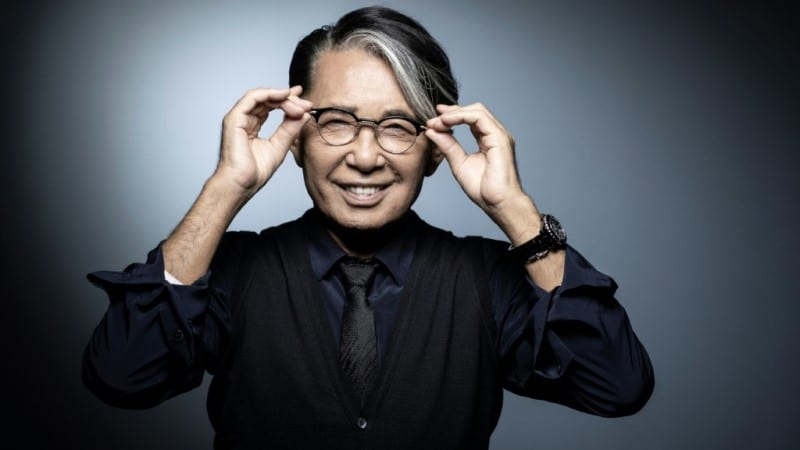
Image by Breaking Asia via flickr.com Video by KENZO via youtube.com -
Junya Watanabe is a Japanese fashion designer known for his avant-garde and experimental approach to design. Born in Fukushima, Japan, he studied under the legendary designer Rei Kawakubo at Comme des Garçons before launching his own eponymous label in 1992.
Watanabe's design philosophy revolves around the exploration of unconventional materials, innovative construction techniques, and the deconstruction and reconstruction of traditional garments. His collections often feature complex patchwork, intricate layering, and unexpected fabric combinations, creating unique and thought-provoking designs.
One of Watanabe's signature approaches is his collaboration with other brands and designers. He has collaborated with notable labels such as Levi's, The North Face, and Nike, infusing his avant-garde aesthetic with their iconic designs. These collaborations showcase his ability to blend elements of streetwear, workwear, and high fashion, resulting in truly distinctive and cutting-edge collections.
Watanabe's designs are often celebrated for their technical expertise, attention to detail, and meticulous craftsmanship. He experiments with different textiles, ranging from traditional fabrics to high-tech materials, creating garments that challenge conventional notions of form and function. His work blurs the boundaries between art and fashion, often eliciting a sense of awe and wonder from audiences.
Throughout his career, Watanabe has received numerous accolades and recognition for his contributions to the fashion industry. His collections have been showcased in prestigious exhibitions and museums worldwide, including the Metropolitan Museum of Art in New York and the Victoria and Albert Museum in London.Born: 1961
Education: Bunka Fashion College
Website: https://www.shopenauer.com/en/brand/junya-watanabe/tokyo
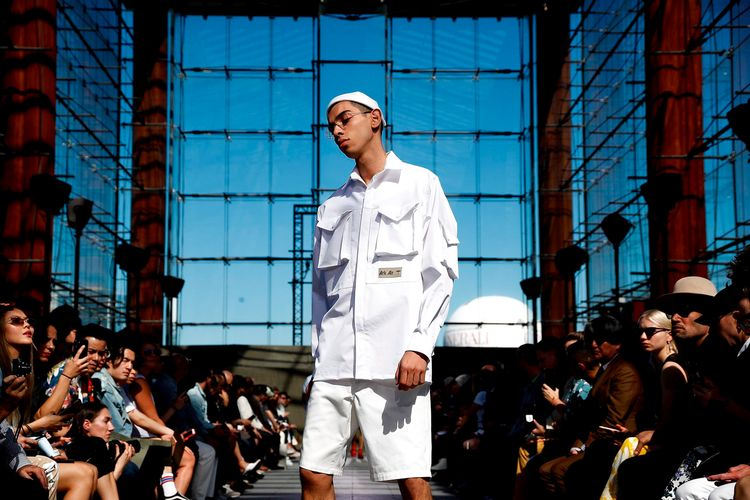
Image by Ark Air via flickr.com Video by FF Channel via youtube.com -
Hiroshi Fujiwara is often referred to as the "Godfather of Streetwear" and is known for his pioneering work in the field of street fashion and his role in shaping contemporary street culture in Japan and globally. Born in 1964 in Japan, Fujiwara developed an early interest in music and fashion.
In the 1980s, Hiroshi Fujiwara emerged as a prominent figure in the Japanese fashion scene and became known for his distinctive style and eclectic tastes. He was heavily influenced by punk, hip-hop, and skateboarding cultures, and he translated these influences into his personal style and creative projects.
Fujiwara's career gained momentum in the 1990s when he founded his first fashion label, Goodenough, which showcased his unique blend of streetwear and high fashion. He also co-founded the influential label "UNDERCOVER" with Jun Takahashi, another prominent Japanese designer. He collaborated with various fashion and lifestyle brands, such as Nike, Fragment Design, and Louis Vuitton.
In addition to his contributions to the fashion industry, Fujiwara has also made significant contributions to the music scene. He is a renowned DJ and music producer known for his ability to blend various genres and create unique sounds. Fujiwara's involvement in music has often intersected with his fashion endeavors, leading to collaborations with artists and musicians.Born: 1964
Education: Setsu Mode Seminar
Website: https://archive-factory.com/collections/hiroshi-fujiwara
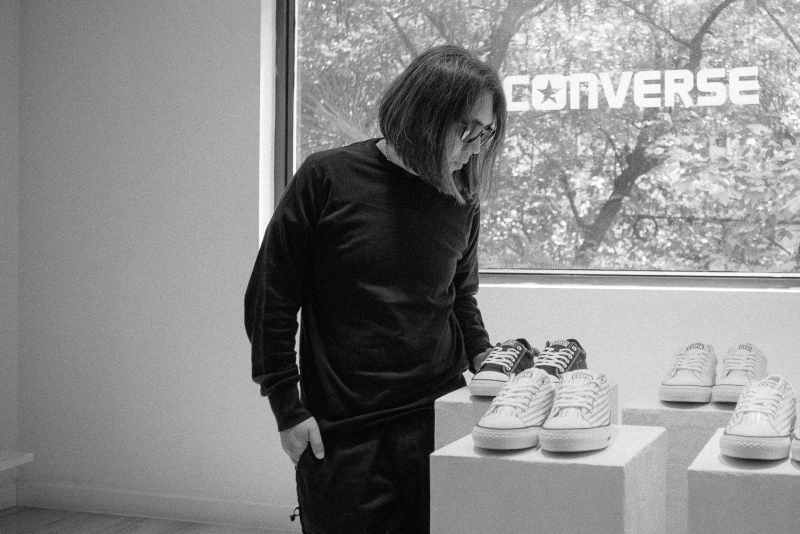
Image by sam deng via flickr.com Video by Highsnobiety via youtube.com -
Chitose Abe was born in Gifu, Japan, and she developed a passion for fashion from a young age. She studied at the prestigious Bunka Fashion College in Tokyo, where she honed her skills and knowledge of garment construction and design.
Abe began her career in the fashion industry working for Junya Watanabe, another notable Japanese designer, as a pattern cutter. Her talent and dedication soon caught the attention of the industry, and in 1999, she launched her own brand, Sacai. The name "Sacai" comes from the combination of "sa," meaning "to create," and "chai," meaning "to join," in French.
Abe's designs are characterized by her unique approach to hybridization and deconstruction. She often combines contrasting fabrics, textures, and silhouettes to create garments that blur the lines between different styles and categories. Her work often features asymmetrical cuts, unexpected fabric combinations, and innovative construction techniques.
Chitose Abe's contributions to the fashion industry have been widely recognized. She has received numerous awards, including the LVMH Prize Special Jury Prize in 2015 and the Fashion Prize of the Hyères International Festival of Fashion and Photography in 2002. Her designs have been exhibited in prestigious museums and galleries around the world, showcasing her innovative vision and creative prowess.Born: 1965
Education: Bunka Fashion College
Website: https://www.sacai.jp/
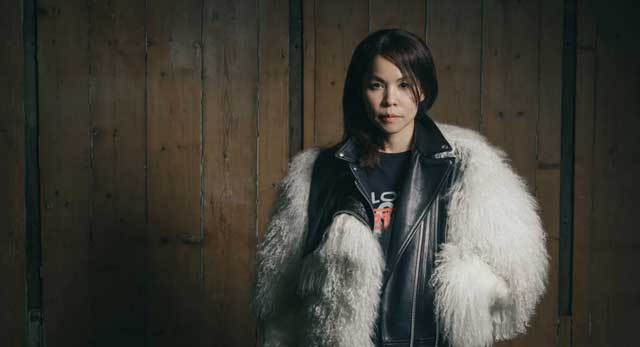
Image by cukil com via flickr.com Video by FF Channel via youtube.com -
Hanae Mori is a distinguished Japanese fashion designer and the first Asian woman to become a member of the prestigious Chambre Syndicale de la Haute Couture in Paris. Born on January 8, 1926, in Shimane, Japan, Mori developed a passion for fashion and design from a young age.
In 1951, he opened her first fashion studio in Tokyo, establishing her eponymous label, Hanae Mori. Her early designs were known for their elegant and feminine aesthetic, often featuring delicate prints and intricate details. Mori drew inspiration from traditional Japanese culture and craftsmanship, incorporating elements such as kimono-inspired silhouettes and motifs into her creations.
Her talent and unique vision quickly gained recognition, and in 1965, Hanae Mori became the first Japanese designer to showcase her collection in Paris. The show was a resounding success, leading to international acclaim and establishing her as a prominent figure in the global fashion industry.
Mori's contributions to fashion extend beyond clothing. She expanded her brand to include accessories, fragrances, and home decor, further establishing herself as a multifaceted creative force. Her fragrances, in particular, became highly successful and beloved by many, showcasing her ability to capture and express elegance and refinement in olfactory compositions.Born: 1926
Died: 1926
Education: Tokyo Women's Christian University
Website: https://www.hanae-mori.com/
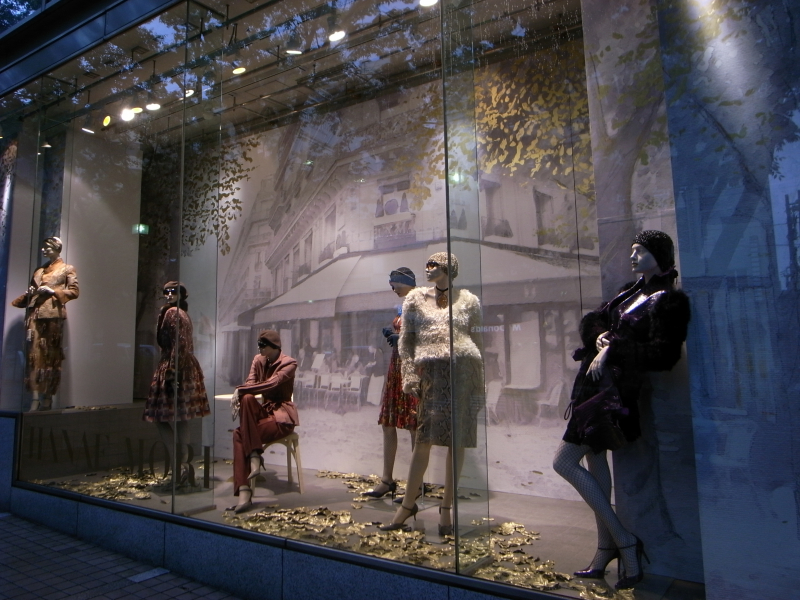
Image by Hideki Nara via flickr.com Video by FF Channel via youtube.com -
Born in 1969 in Kiryu, Gunma Prefecture, Japan, Jun Takahashi developed a passion for music and fashion from a young age. In 1990, Takahashi founded Undercover, originally as a small punk-inspired fashion brand.
Undercover gained recognition in the late 1990s and early 2000s for its innovative designs and runway presentations. Takahashi's shows became highly anticipated and were known for their theatricality and thought-provoking concepts. His ability to combine fashion, art, and storytelling in his collections set him apart and garnered critical acclaim.
Takahashi's design aesthetic often features deconstructed silhouettes, unexpected fabric combinations, and intricate detailing. He frequently incorporates graphic prints, asymmetry, and unconventional cuts into his designs, creating garments that challenge traditional fashion norms. His collections often convey a sense of rebellion and evoke emotions, making a strong impact on the fashion world.
Throughout his career, Takahashi has collaborated with various brands and artists, including Nike, Uniqlo, and Supreme. These collaborations have allowed him to reach a broader audience and further expand his creative vision beyond the confines of traditional fashion.
In addition to his work in fashion, Jun Takahashi is also an accomplished musician. He is a founding member of the Japanese noise rock band "Thee Michelle Gun Elephant" and has released albums and performed on stage.Born: 1969
Education: Bunka Fashion College
Website: https://undercoverism.com/
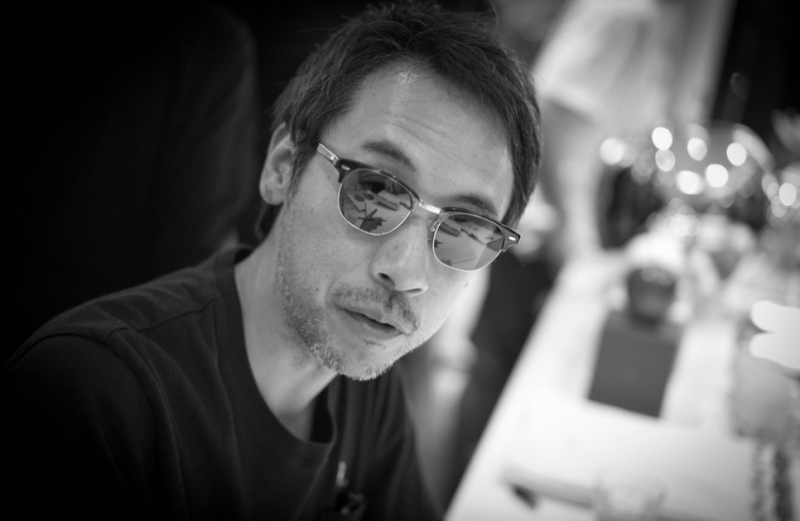
Screenshot via flickr.com Video by FF Channel via youtube.com -
Kansai Yamamoto was a celebrated Japanese fashion designer known for his bold and theatrical designs. Born on February 8, 1944, in Yokohama, Japan, he began his career in fashion in the late 1960s and quickly rose to prominence for his avant-garde creations.
Yamamoto gained international recognition when he presented his first collection in London in 1971. His show, featuring flamboyant designs inspired by traditional Japanese culture and infused with a futuristic aesthetic, captivated the audience and established him as a groundbreaking designer. He became known for his vibrant colors, exaggerated silhouettes, and innovative use of fabrics.
Throughout his career, Yamamoto pushed the boundaries of fashion, challenging conventional norms and experimenting with unconventional materials. His collaborations with artists and musicians, including David Bowie and Elton John, further showcased his ability to merge fashion and other art forms.
Yamamoto's work often featured intricate embroidery, intricate patterns, and cultural references, blending traditional Japanese craftsmanship with contemporary design. His designs were characterized by their energy, playfulness, and sense of theatricality, which captivated audiences.
One of Kansai Yamamoto's most iconic collaborations was with musician David Bowie, for whom he created extravagant costumes, including the famous "Tokyo Pop" jumpsuit worn during Bowie's Ziggy Stardust tour in 1973. This collaboration solidified Yamamoto's status as a visionary designer and further elevated his international reputation.Born: 1944
Died: 2020
Education: Nippon University, Bunka Fashion College
Website: https://kansai-inc.co.jp/
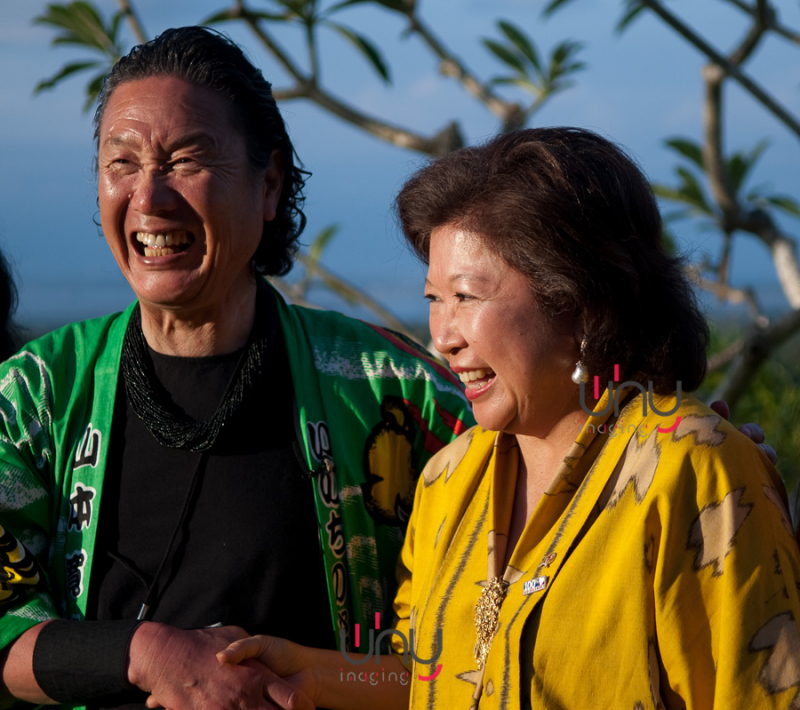
Image by yano sumampow via flickr.com Video by Victoria and Albert Museum via youtube.com












